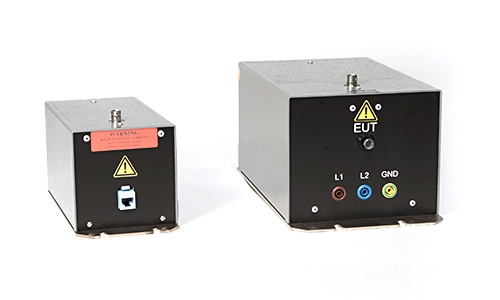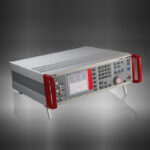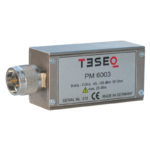EN 61000-4-6 requires that the EUT be tested from 150 kHz to 80 MHz with the capability to test up to 230 MHz. No test levels have been imposed in the 9 kHz to 150 kHz region because of the low probability of causing electronic systems to fail from with either intentional or unintentional radiators.
The specification has three open circuit voltage levels 1, 3, and 10. These levels have been selected because they represent the mid range of radiated fields.
Coupling and Decoupling Networks
The common mode current disturbance signal can be delivered to the EUT using a variety of coupling networks to inject the signal onto the unscreened cables, shielded cables, balanced cables, coaxial cables and power mains.
Decoupling networks are used to insure that the disturbance signal does not influence the auxiliary equipment and are placed between the EUT and the auxiliary equipment. One decouling network is inductive and uses a high impedance choke. The second decoupling network combines resistive and inductive technique by using ferrite toroids that are placed around the cables connecting the EUT and the auxiliary equipment. These coupling and decouling networks can be separate or combined in the same instrument





